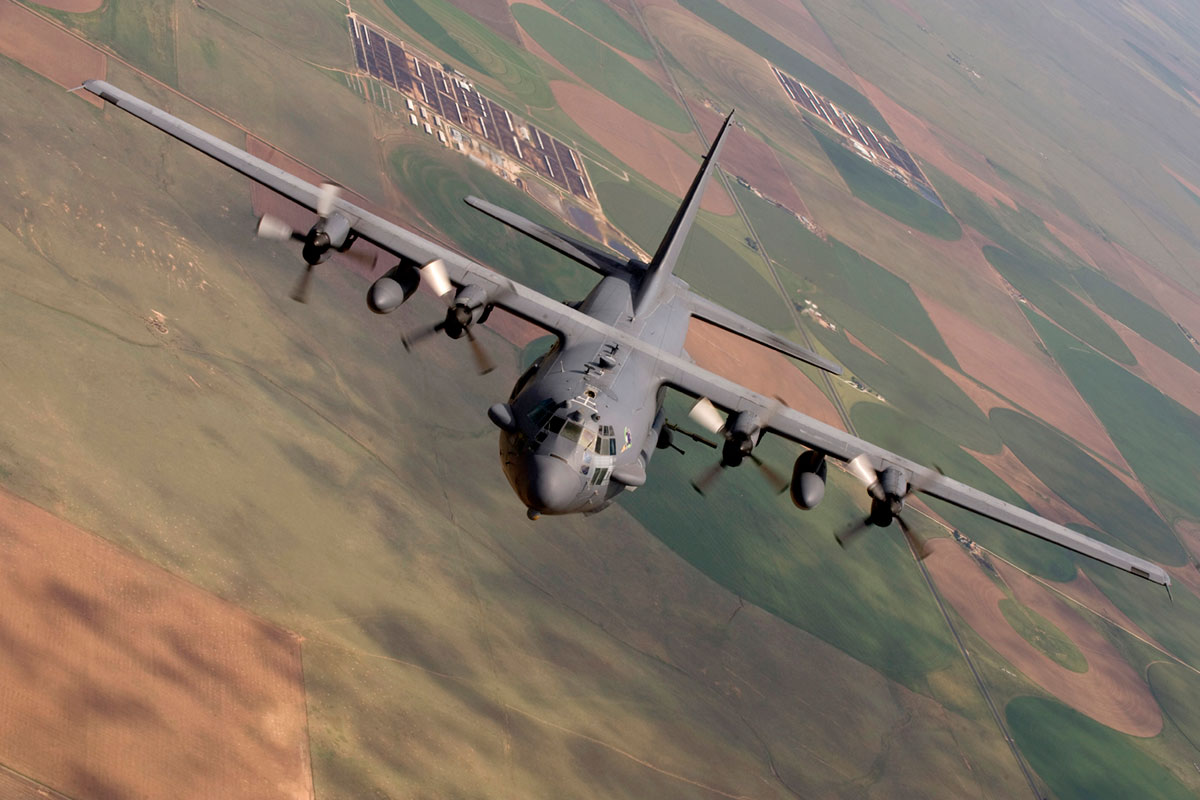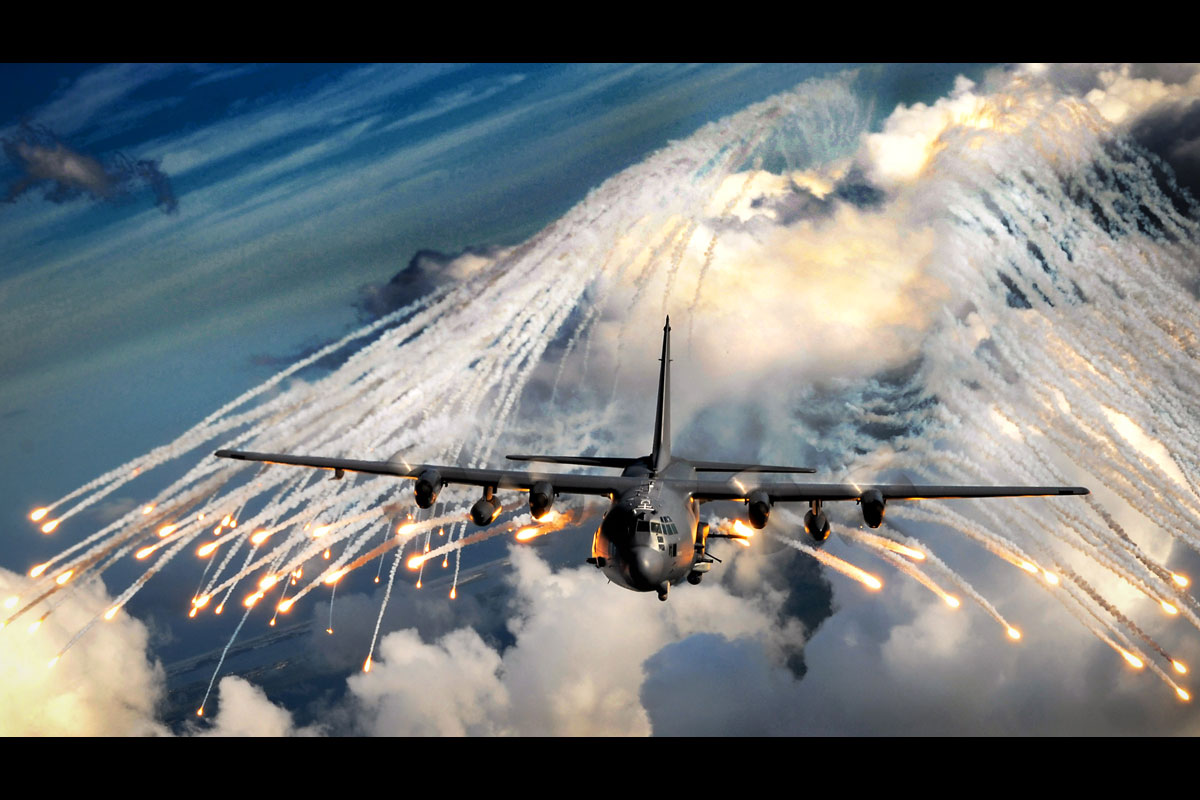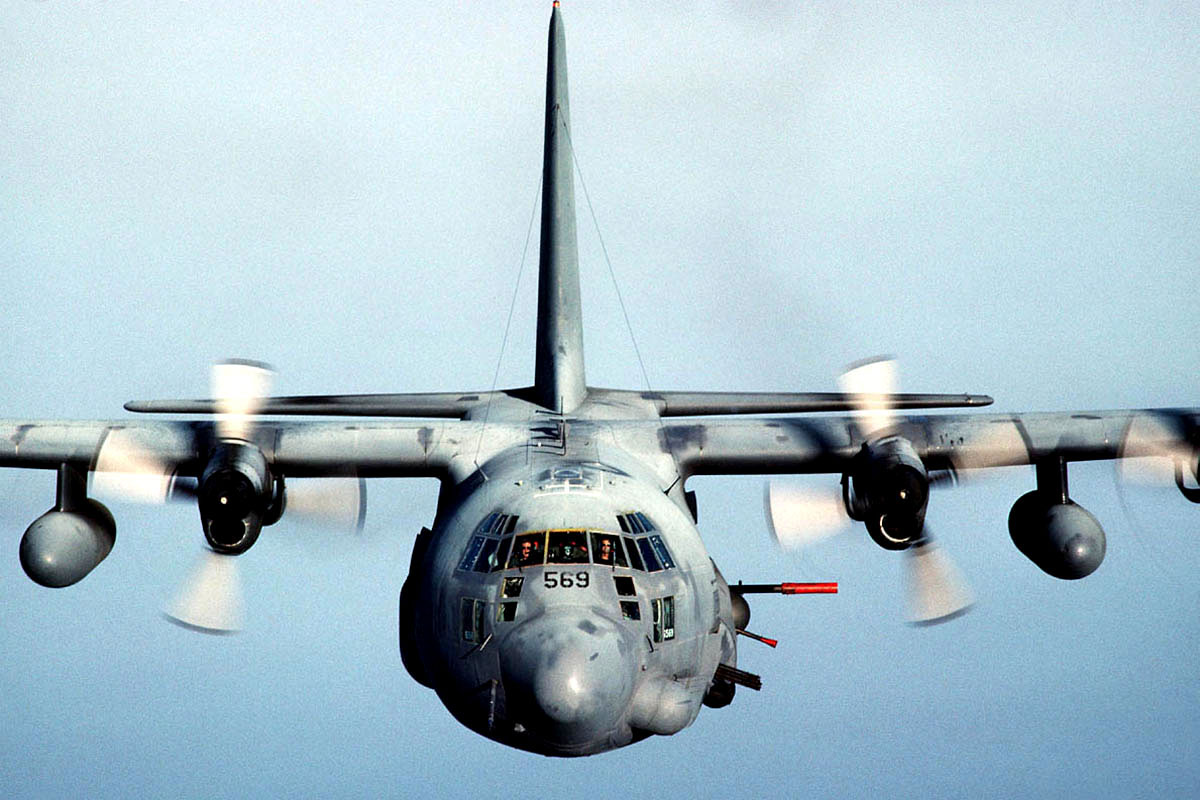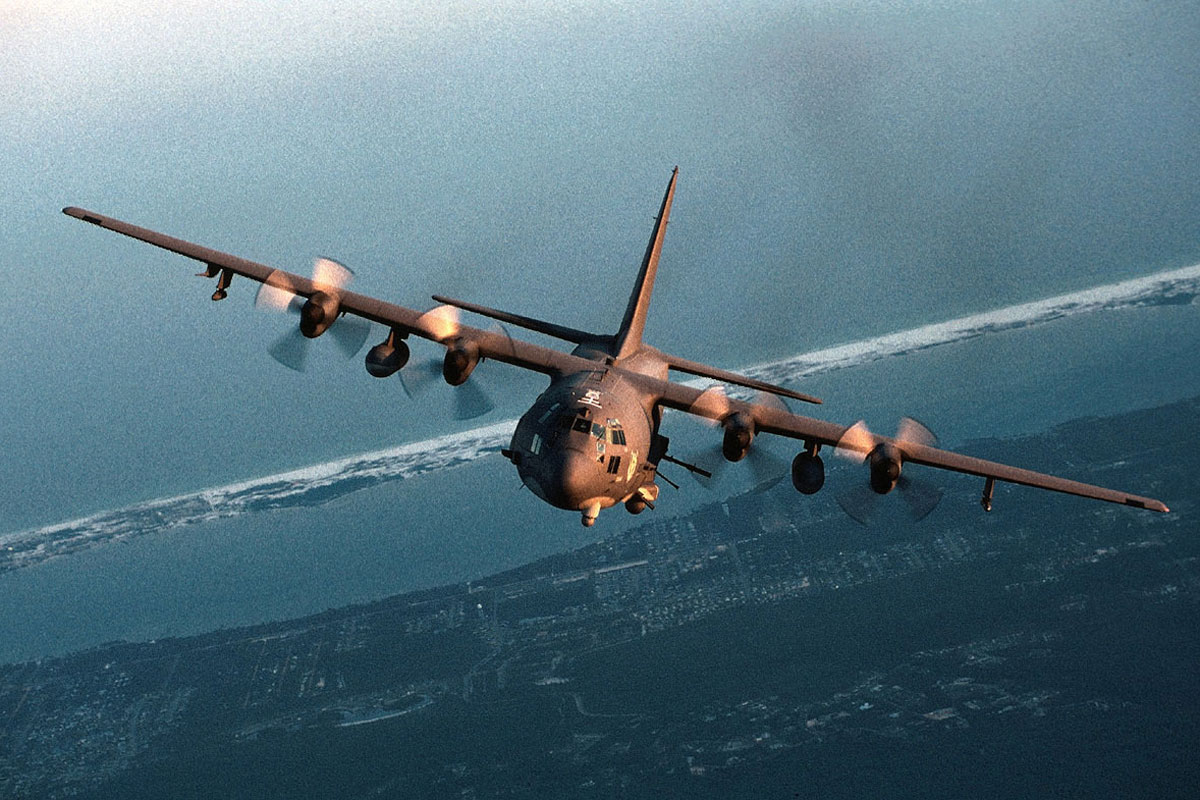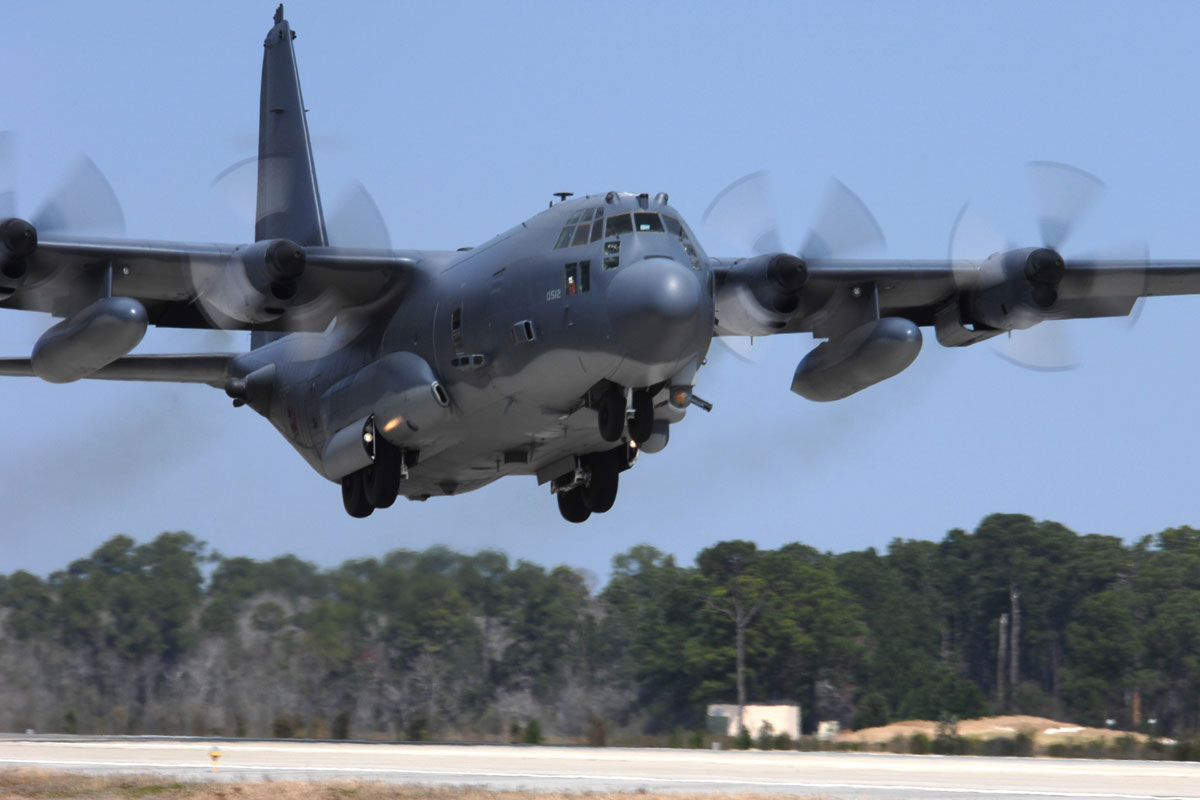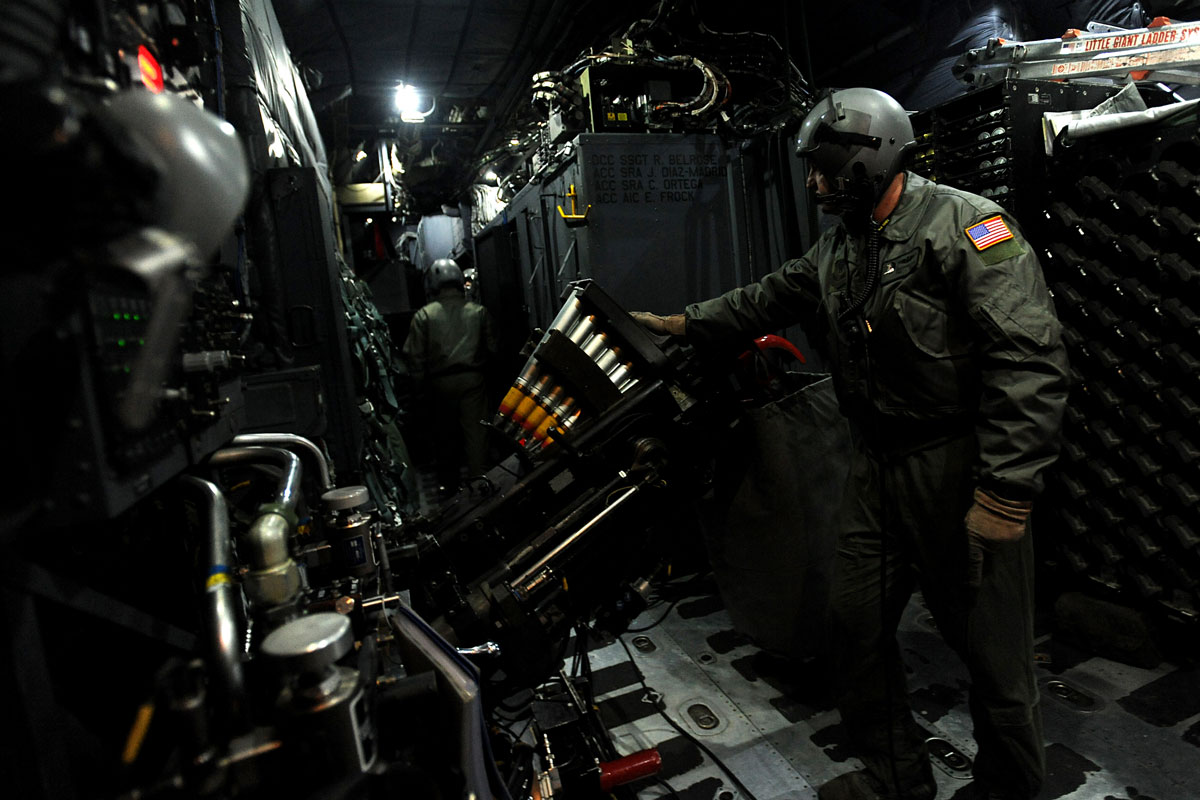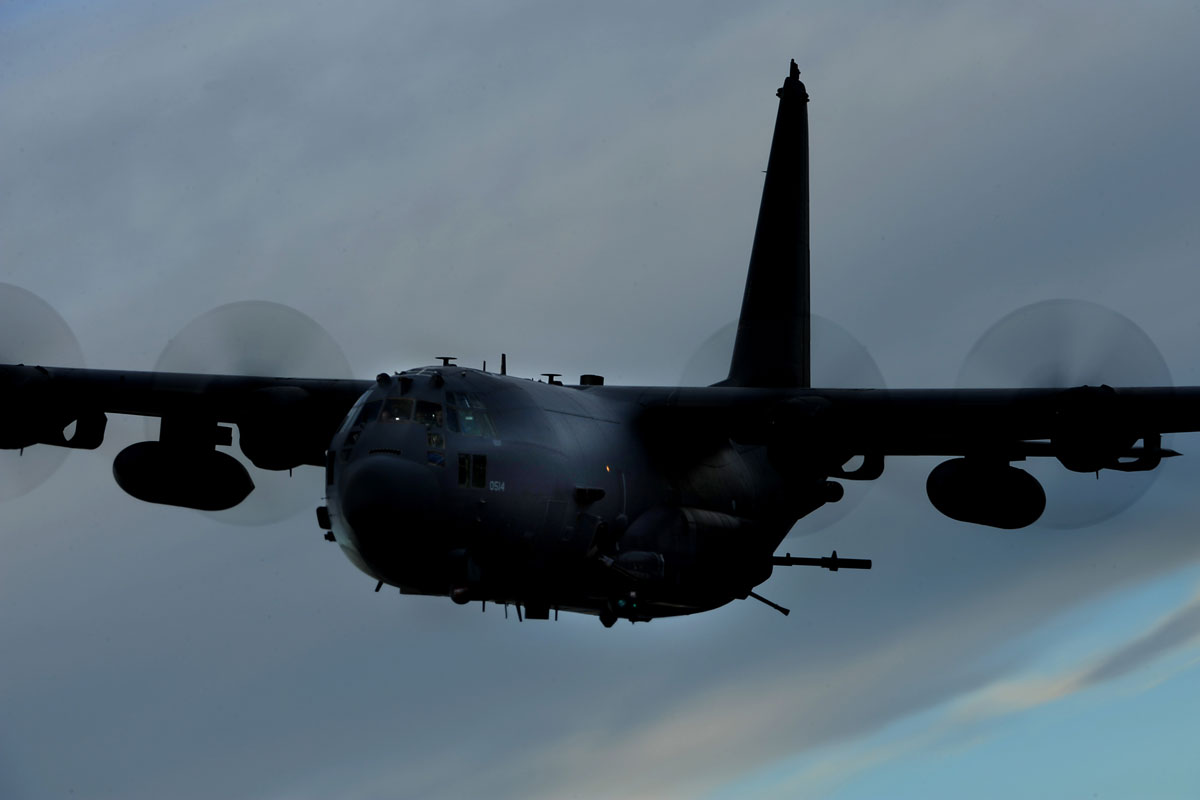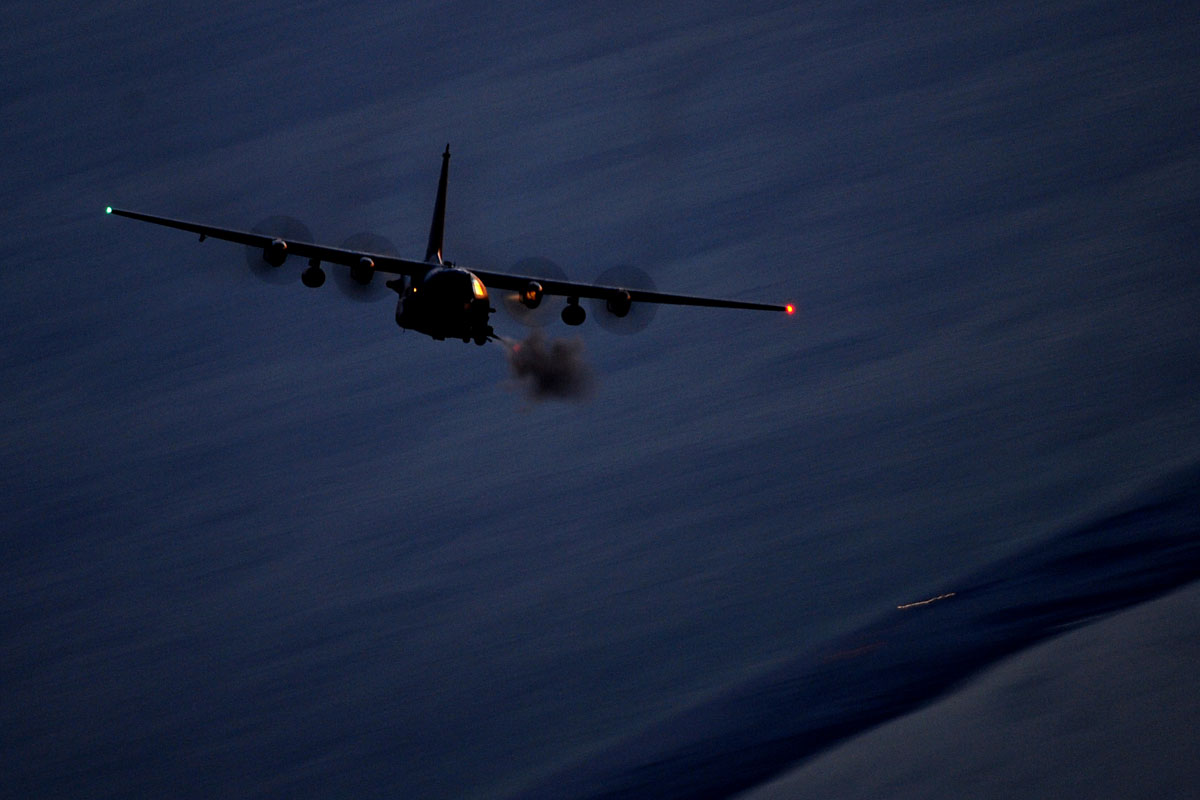Manufacturer: Lockheed / Boeing Corp.
Service: USAF Armament: AC-130H: 40mm and 105mm cannons; AC-130U: 40mm, 105mm cannons and 25mm gatling gun. Propulsion: Four Allison T56-A-15 turboprop engines Speed: 300 mph Range: 1,300 nm Crew: AC-130H/U - pilot, co-pilot, navigator, fire control officer, electronic warfare officer (five officers) and flight engineer, TV operator, infrared detection set operator, loadmaster, four aerial gunners (eight enlisted)The AC-130H Spectre and the AC-130U Spooky primary missions are close air support, air interdiction and armed reconnaissance. Close air support missions include troops in contact, convoy escort and point air defense. Air interdiction missions are conducted against preplanned targets or targets of opportunity and include strike coordination and reconnaissance and armed overwatch mission sets.
These heavily armed aircraft incorporate side-firing weapons integrated with sophisticated sensor, navigation and fire control systems to provide surgical firepower or area saturation during extended loiter periods, at night and in adverse weather. The sensor suite consists of a television sensor, infrared sensor and radar. These sensors allow the gunship to visually or electronically identify friendly ground forces and targets.
The AC-130 is armed with a fearsome array of weaponry, including a 105 mm cannon and 25 or 40 mm gatling guns.
The AC-130U employs a synthetic aperture strike radar for long-range and adverse weather target detection and identification. The AC-130's navigational devices include inertial navigation systems and global positioning systems. Both of the AC-130s employ the latest technologies and can attack two targets simultaneously.
The Spooky (U-model) is the third generation of C-130 gunships. All gunships evolved from the first operational gunship, the AC-47
The AC-130 gunship has a combat history dating to Vietnam. Gunships destroyed more than 10,000 trucks and were credited with many life-saving close air support missions. During Operation Urgent Fury in Grenada in 1983, AC-130s suppressed enemy air defense systems and attacked ground forces enabling the successful assault of the Point Salines Airfield via airdrop and air land of friendly forces. The AC-130 aircrew earned the Lt. Gen. William H. Tunner Award for the mission.
AC-130s also had a primary role during Operation Just Cause in Panama in 1989 when they destroyed Panamanian Defense Force Headquarters and numerous command and control facilities. Aircrews earned the Mackay Trophy for the most meritorious flight of the year and the Tunner Award for their efforts.
During Operation Desert Storm, AC-130s provided close air support and force protection (air base defense) for ground forces. Gunships were also used during operations Continue Hope and United Shield in Somalia, providing close air support for United Nations ground forces. Gunships also played a pivotal role in supporting the NATO mission in Bosnia-Herzegovina. The AC-130H provided air interdiction against key targets in the Sarajevo area.
In 1997, gunships were diverted from Italy to provide combat air support for U.S. and allied ground troops during the evacuation of American noncombatants in Albania and Liberia. AC-130s were also part of the buildup of U.S. forces in 1998 to convince Iraq to comply with U.N. weapons inspections. More recently, AC-130U gunships have supported Operation Iraqi Freedom/New Dawn while both aircraft have been employed in support of Operation Enduring Freedom. Finally, AFSOC gunships have also played a pivotal role in the recent uprisings in the middle east. Gunships provide armed reconnaissance, interdiction and direct support of ground troops engaged with enemy forces.
